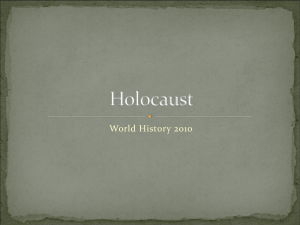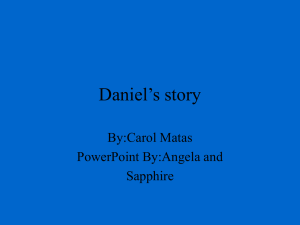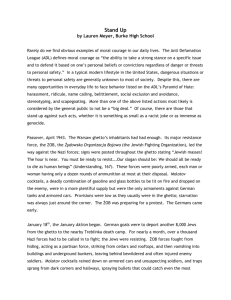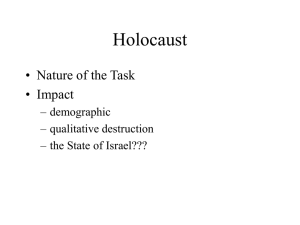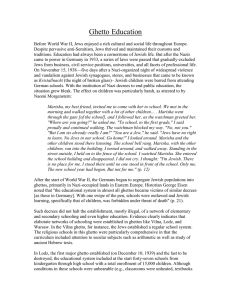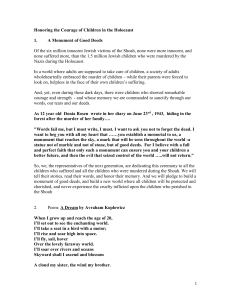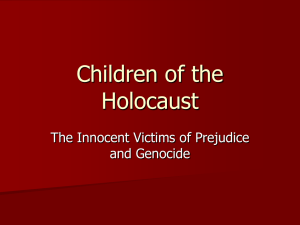Suggested topics for research at the Archives of the Ghetto Fighters
advertisement
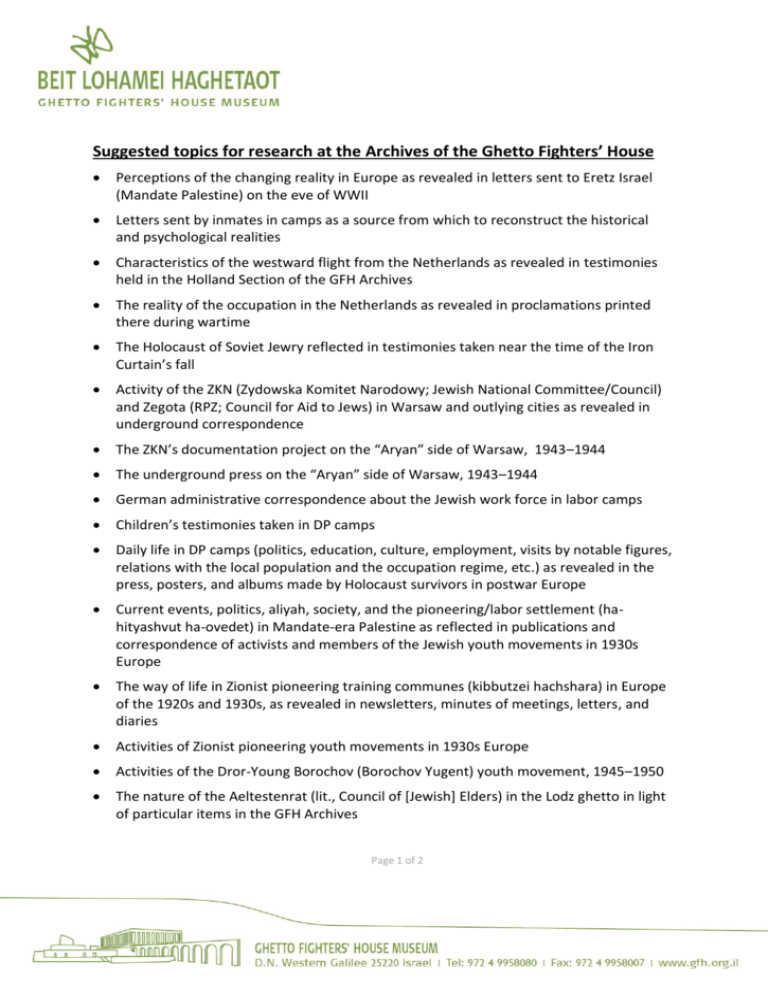
Suggested topics for research at the Archives of the Ghetto Fighters’ House Perceptions of the changing reality in Europe as revealed in letters sent to Eretz Israel (Mandate Palestine) on the eve of WWII Letters sent by inmates in camps as a source from which to reconstruct the historical and psychological realities Characteristics of the westward flight from the Netherlands as revealed in testimonies held in the Holland Section of the GFH Archives The reality of the occupation in the Netherlands as revealed in proclamations printed there during wartime The Holocaust of Soviet Jewry reflected in testimonies taken near the time of the Iron Curtain’s fall Activity of the ZKN (Zydowska Komitet Narodowy; Jewish National Committee/Council) and Zegota (RPZ; Council for Aid to Jews) in Warsaw and outlying cities as revealed in underground correspondence The ZKN’s documentation project on the “Aryan” side of Warsaw, 1943–1944 The underground press on the “Aryan” side of Warsaw, 1943–1944 German administrative correspondence about the Jewish work force in labor camps Children’s testimonies taken in DP camps Daily life in DP camps (politics, education, culture, employment, visits by notable figures, relations with the local population and the occupation regime, etc.) as revealed in the press, posters, and albums made by Holocaust survivors in postwar Europe Current events, politics, aliyah, society, and the pioneering/labor settlement (hahityashvut ha-ovedet) in Mandate-era Palestine as reflected in publications and correspondence of activists and members of the Jewish youth movements in 1930s Europe The way of life in Zionist pioneering training communes (kibbutzei hachshara) in Europe of the 1920s and 1930s, as revealed in newsletters, minutes of meetings, letters, and diaries Activities of Zionist pioneering youth movements in 1930s Europe Activities of the Dror-Young Borochov (Borochov Yugent) youth movement, 1945–1950 The nature of the Aeltestenrat (lit., Council of [Jewish] Elders) in the Lodz ghetto in light of particular items in the GFH Archives Page 1 of 2 The historical consciousness of the Jewish establishment in the Lodz ghetto as emerges from albums and publications of the Lodz ghetto Aeltestenrat Photography as testimony in the Lodz ghetto: Grosman, Ross, and Maliniak Daily life in the Lodz ghetto a revealed by proclamations issued by Rumkowski Zivia Lubetkin and Yitzhak “Antek” Zuckerman: their contribution to shaping Holocaust remembrance Rescue attempts through formal channels: individual applications by Jewish deportees in Poland to the German authorities, requesting permission to return to Austria and Germany The “Kindertransport” as an avenue of rescue: children’s coping with the separation from their parents and other family figures, being on European soil although not under German occupation Jews rescuing Jews: o Alfred Schwarzbaum: a one-man rescue operation o Leo Israelowicz: activities in UGIF to aid Jews in occupied France o Abraham-Adolf Silberschein: rescue attempts by means of foreign passports Antisemitic and anti-Communist posters in occupied Serbia The activities of Miriam Novitch in documenting the Holocaust Literary creating during the Holocaust period (prose and poetry written in camps, ghettos, and in hiding) The Mauritius Exile: a forgotten chapter in the history of clandestine aliyah Bronka Klibanska: underground and documentation activities The Koordinacja (“Zionist Coordination”) for the discovery and recovery of Jewish children in postwar Poland Creating a Zionist identity among young Holocaust survivors in postwar Jewish educational settings (the Koordinacja and others) Israeli Police Bureau 06: preparing materials for the Eichmann trial The Kushta Archives: representation in Istanbul of the Jewish community (Yishuv) in WWII-era Mandate Palestine The sea voyage to Eretz Israel-Mandate Palestine as a transitional phase between identities: analysis of diaries and letters Sara Shner-Neshamit: partisan and researcher Page 2 of 2
